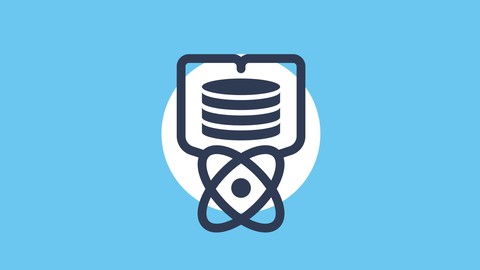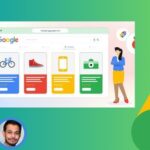
Microsoft SQL from scratch – Beginner to Expert
Microsoft SQL from scratch – Beginner to Expert, available at $59.99, has an average rating of 4.4, with 85 lectures, based on 160 reviews, and has 19590 subscribers.
You will learn about Extract and Read Data Using SELECT statements Insert new data into database Update existing data in a database Delete data from a database Understand Normalization Extract Data from multiple tables using table joins Filter data returned from a query Sort data returned by a query Group data returned by a query Summarize data using aggregate functions Build real world queries for business intelligence Remove Duplicate Records This course is ideal for individuals who are Beginners to Microsoft SQL ( T -SQL ) or Beginner DBA ( Database Administrator) or Beginner Data Analyst or Beginner Data Scientist It is particularly useful for Beginners to Microsoft SQL ( T -SQL ) or Beginner DBA ( Database Administrator) or Beginner Data Analyst or Beginner Data Scientist.
Enroll now: Microsoft SQL from scratch – Beginner to Expert
Summary
Title: Microsoft SQL from scratch – Beginner to Expert
Price: $59.99
Average Rating: 4.4
Number of Lectures: 85
Number of Published Lectures: 85
Number of Curriculum Items: 85
Number of Published Curriculum Objects: 85
Original Price: $94.99
Quality Status: approved
Status: Live
What You Will Learn
- Extract and Read Data Using SELECT statements
- Insert new data into database
- Update existing data in a database
- Delete data from a database
- Understand Normalization
- Extract Data from multiple tables using table joins
- Filter data returned from a query
- Sort data returned by a query
- Group data returned by a query
- Summarize data using aggregate functions
- Build real world queries for business intelligence
- Remove Duplicate Records
Who Should Attend
- Beginners to Microsoft SQL ( T -SQL )
- Beginner DBA ( Database Administrator)
- Beginner Data Analyst
- Beginner Data Scientist
Target Audiences
- Beginners to Microsoft SQL ( T -SQL )
- Beginner DBA ( Database Administrator)
- Beginner Data Analyst
- Beginner Data Scientist
Data is everywhere and growing at a rapid rate. Most Software application we interact with daily deals with stored data . From our interaction with our banks to social media.
Due to the relevance and dependency on data , professionals that are skilled in SQL are always in high demand to help interact with various databases to help business intelligence and other sectors that relies on data.
This course will teach you from absolute beginner to expert so you can be confident with enough skills to build simple to complex queries to communicate and interact with databases.
SQL -Structured Query Language is an internationally recognised language used to communicate and manipulate various database systems.T-SQL – Transact SQL is Microsoft’s implementation of SQL. There are a lot of similarities between them but also proprietary parts that are specific to SQL Server.
We will be using Microsoft’s version of SQL ( T-SQL ) popularly referred to as T-Sequel with Microsoft SQL Server .
SQL Server is a relational database management system -RDBMS developed and owned by Microsoft.Thousands of companies all over the world use SQL Server for their data solution .
What You Will Learn include:
-
How to extract data from multiple Database Tables using Joins
-
How to insert new data into database with SQL
-
How to update existing data inside a database
-
How to delete data from a database
-
How to filter data
-
How to sort data
-
How to create and query views
-
How to build a stored procedure
-
How to use Aggregate functions to summarize returned data
-
How to group data
SQL can be used for Data Analysis to transform data already present in the database to valuable useful information that help companies and organisations make key business and management decisions.
This course is a beginners guide to performing data analysis using SQL to interrogate SQL Server to provide answers to data related questions. You will learn to write useful SQL queries that is applicable to the Real World production environment.
Everywhere data is being collected, every transaction, every web page visit,every payment—all these and much, much more are filling relational databases with raw data that can be analysed to provide useful information.
There is a demand for people who can use data to perform reporting and analysis thus helping businesses and organizations make important and critical decisions.
Course Curriculum
Chapter 1: Microsoft SQL Server Installation
Lecture 1: Introduction
Lecture 2: System Requirements
Lecture 3: Please Read
Lecture 4: Download Microsoft SQL Server Express
Lecture 5: What is SQL
Lecture 6: What is T-SQL
Lecture 7: What is SQL Server
Lecture 8: Basic Database Concepts
Lecture 9: Schema
Lecture 10: Install Microsoft SQL Server
Lecture 11: Download Sample Database
Lecture 12: Attach sample database
Lecture 13: Install SSMS ( SQL Server Management Studio)
Lecture 14: Exploring SSMS
Lecture 15: Using Intellisense
Lecture 16: Introduction to Normalization
Lecture 17: Using T-SQL GO command
Lecture 18: Using T-SQL TOP command
Lecture 19: T-SQL USE command
Chapter 2: Extracting Data using SQL
Lecture 1: Using SELECT to extract data
Lecture 2: Using Aliases with SELECT
Lecture 3: Using Case expressions
Lecture 4: Creating and extracting data from views
Lecture 5: Commenting your T-SQL code
Lecture 6: Removing duplicate records
Lecture 7: Using Stored Procedures
Chapter 3: Modifying Data with SQL
Lecture 1: Introduction
Lecture 2: Inserting new data using SQL
Lecture 3: Updating existing data using SQL
Lecture 4: Deleting (dropping) data using SQL
Lecture 5: Summary
Chapter 4: Sorting Data with SQL
Lecture 1: Introduction
Lecture 2: Using ORDER BY
Lecture 3: Sorting by ascending order
Lecture 4: Sorting by descending order
Lecture 5: Sorting by multiple columns
Lecture 6: Summary
Chapter 5: Filtering Data with SQL
Lecture 1: Introduction
Lecture 2: Filtering using basic equality filters
Lecture 3: Filtering using basic comparison filters
Lecture 4: Filtering using basic logical filters
Lecture 5: Filtering using string comparison filters
Lecture 6: Filtering using NULL comparison
Lecture 7: Summary
Chapter 6: Extracting Data From Multiple Tables
Lecture 1: Introduction to Table Joins
Lecture 2: Importance of Table Joins
Lecture 3: Extracting with INNER Join
Lecture 4: Extracting with LEFT OUTER Join
Lecture 5: Extracting with RIGHT OUTER Join
Lecture 6: Extracting with FULL OUTER Join
Lecture 7: Conclusion
Chapter 7: Aggregate Functions and Grouping Data
Lecture 1: Introduction
Lecture 2: Using COUNT Aggregate Function
Lecture 3: Using AVG Aggregate Function
Lecture 4: Using MAX Aggregate Function
Lecture 5: Using MIN Aggregate Function
Lecture 6: Using SUM Aggregate Function
Lecture 7: Using multiple aggregate functions
Lecture 8: Grouping Data
Lecture 9: Summary
Chapter 8: Real World Data Analysis and Business Intelligence using SQL
Lecture 1: Download Nortwind Database
Lecture 2: Attach Nortwind Database to SQL Server
Lecture 3: Build a query to show contact titles for customers
Lecture 4: Build query to show customers and employee count
Lecture 5: Analysing and extracting data from multiple data
Lecture 6: Build query to show Sales Reps
Lecture 7: Build a query to check specific products
Lecture 8: Build a query to check suppliers details
Lecture 9: Build query to checck least and most expensive product
Lecture 10: Build a query to check orders shipped
Lecture 11: Build a query to list shippers
Lecture 12: Build a query to show discontinued products
Lecture 13: Build query to check first order placed.
Lecture 14: Build query to check orders shipped to Latin America
Lecture 15: Build query to show sales reps in a country
Lecture 16: Build a query to check product stock
Lecture 17: Build a query to show countries with customers
Chapter 9: Some Exercises For You
Lecture 1: Exercise 1
Lecture 2: Exercise 2
Lecture 3: Exercise 3
Lecture 4: Excercise 4
Lecture 5: Exercise 5
Lecture 6: Exercise 6
Lecture 7: Exercise 7
Lecture 8: Thank You
Instructors
-

Bluelime Learning Solutions
Making Learning Simple
Rating Distribution
- 1 stars: 1 votes
- 2 stars: 8 votes
- 3 stars: 27 votes
- 4 stars: 59 votes
- 5 stars: 65 votes
Frequently Asked Questions
How long do I have access to the course materials?
You can view and review the lecture materials indefinitely, like an on-demand channel.
Can I take my courses with me wherever I go?
Definitely! If you have an internet connection, courses on Udemy are available on any device at any time. If you don’t have an internet connection, some instructors also let their students download course lectures. That’s up to the instructor though, so make sure you get on their good side!
You may also like
- Digital Marketing Foundation Course
- Google Shopping Ads Digital Marketing Course
- Multi Cloud Infrastructure for beginners
- Master Lead Generation: Grow Subscribers & Sales with Popups
- Complete Copywriting System : write to sell with ease
- Product Positioning Masterclass: Unlock Market Traction
- How to Promote Your Webinar and Get More Attendees?
- Digital Marketing Courses
- Create music with Artificial Intelligence in this new market
- Create CONVERTING UGC Content So Brands Will Pay You More
- Podcast: The top 8 ways to monetize by Podcasting
- TikTok Marketing Mastery: Learn to Grow & Go Viral
- Free Digital Marketing Basics Course in Hindi
- MailChimp Free Mailing Lists: MailChimp Email Marketing
- Automate Digital Marketing & Social Media with Generative AI
- Google Ads MasterClass – All Advanced Features
- Online Course Creator: Create & Sell Online Courses Today!
- Introduction to SEO – Basic Principles of SEO
- Affiliate Marketing For Beginners: Go From Novice To Pro
- Effective Website Planning Made Simple




















